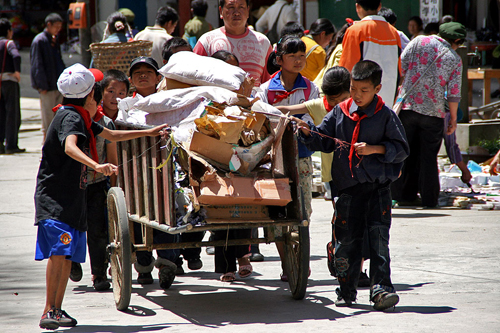Weishan 巍山
Weishan; home of the Yi Minority in China’s Yunnan province, on a mid-summer’s afternoon is a sleepy place where nothing much happens.

This is small town China
This is small town China, where pipe smoking, card playing men squat on small bamboo stools that spill out onto the pavement and street, and while away their days in the teahouses.

Women sit by the roadside, grilling vegetables, or tend to their small shops. Long strings of drying noodles sway in the gentle breeze and baskets of freshly picked boletus, neatly arranged in wicker baskets, wait for buyers.

Local transport is equally divided between the motorized and the equine, with trishaws and horse carts vying for right of way in the narrow streets. The peace is only broken by the antics of the local madman who runs up and down the street, naked apart from something resembling a Polynesian skirt, and provides the principal entertainment of the day.
Continue reading “Weishan Home of the Yi Minority”


































